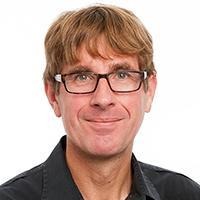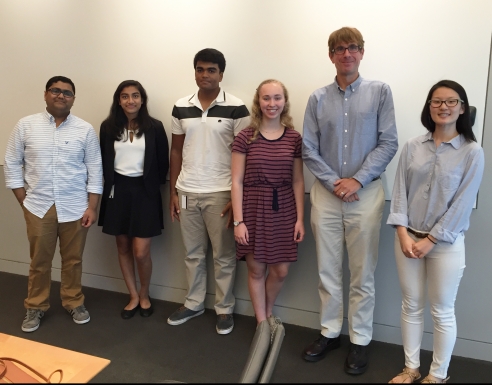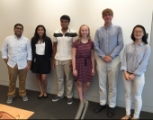
Biography
I grew up in Coos Bay, on the south coast of Oregon. My first grade teacher, Mrs. Hill, sparked my early interest in science with a table covered with bones, crystals, fossils, a small microscope, and a terrarium with chameleons (actually green anoles). I knew then that I wanted to be a scientist. I got my first research opportunity when I attended Harvard College. I used to cook for the head of research at a biotechnology company and she knew I was interested in science. She helped me find a summer research position in a protein chemistry lab at the company. This experience only made me want more. I went to Oregon Health Sciences University to study protozoan parasite biology with Scott Landfear and developed an interest in imaging. Green fluorescent protein was cloned and first used around that time and so I sought a live cell microscopy lab for my postdoc. I went to Jennifer Lippincott-Schwartz's lab at the National Institutes for Health to learn confocal microscopy and biophysical techniques to study protein organization and trafficking in cells. I worked on endoplasmic reticulum (ER) structure-function. When I started my own lab at the Albert Einstein College of Medicine, I focused on quality control of secretory proteins and ER stress. My lab created the first live cell biosensor of misfolded secretory protein levels. While studying these phenomena, my lab learned that many fluorescent proteins perform poorly in environments other than the cytoplasm of cells, i.e. in the endoplasmic reticulum and other organelles. In cell organelles, the chemistry can be very different and this can cause cytoplasmic proteins to misfold, become quenched or get modified in inappropriate ways. Most recently my lab developed a new palette of inert fluorescent proteins suitable for a variety of cellular environments. I continue to study chaperones and misfolded protein stress in cells.
As a professor, I discovered that in addition to research, that I enjoyed teaching and mentoring young scientists. I developed courses in microscopy and experimental design, as well as lectures in cell biology and responsible processing of images. I served as the chair of my department's graduate committee, and as a member of the Einstein Graduate Executive Committee and the Belfer Postdoctoral Committee.
In 2016, I left Einstein to pursue helping graduate students and postdoctoral fellows with career development and graduate education at Janelia. My role includes providing career coaching and counseling of all interested scientists from technicians to group leaders, assistance with job application materials, inviting speakers on career development and career options, development of new courses, feedback on presentations and manuscript writing, overseeing the joint graduate program, co-directing the Graduate Research Fellows program, running the several summer research undergraduate research programs, and organizing a local high school internship program in conjunction with Loudoun County Public Schools. Recently, I've offered workshops on Applying for a Faculty Position, Writing a Specific Aims Page, and Preparing a Chalk Talk. The resources at Janelia provide tremendous opportunities to develop programs that best help our trainees to succeed in achieving their academic and career goals.


